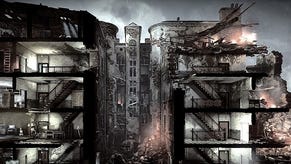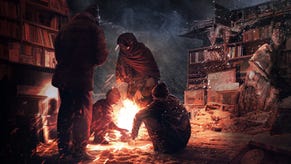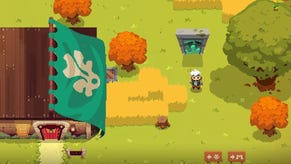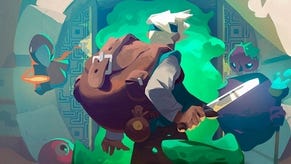Games of 2014: This War of Mine
This was a terrible night.
Is it weird that my favourite game of the year is the one that made me feel like shit? It certainly feels weird, now that everything is upbeat and festive and goodwill to all men is swilling around the place. Back in the dark damp days of November, however, This War of Mine's chilly, scratchy jolt of wartime angst felt perfectly at home.
And it's the concept of "home" that is at the heart of 11 Bit Studios' cruel creation. That's one of the things I love about it. Set during some interminable European civil war, you spend the game's daylight hours trying to make the most of a bombed-out shell of a building, patching together small luxuries like an armchair or a mattress, scraping together the parts to build a cooker or a boiler and plugging what holes in the wall you can, in a vain attempt to keep bandits from stealing what meagre possessions you've managed to find.
It sounds horrible. It is horrible. But it's brilliant.

Part of the appeal, for me, is the game's side-on dollhouse aesthetic. As a kid, I was obsessed with David Crane's Little Computer People. The sight of digital characters, mooching about, lost in their pixel-powered thoughts charmed me then and the idea of virtual lives being acted out in front of me is still hugely powerful. This War of Mine has the same allure, albeit with a distinctly bitter taste.
I love the game's aesthetic. The characters are detailed and beautifully animated. The way they get up, sit down, trudge upstairs or curl up in a ball and weep is enchanting and haunting. They remind me, somehow, of both Banksy's stylised murals and Muybridge's photographic studies of people and animals, lifelike yet not, with a staccato stop-motion quality, where you can sense the life behind the images.
I love the sketchy pencil-scribbled touches to the world, the constant fuzz of cross-hatching that skitters and dances in the glare of distant virtual explosions. The fluttering of ragged greyscale blankets, tacked up over broken windows. The muffled thumps of bombs and the tinny crackle of gunfire. They're such simple tools, yet combined they evoke a place that feels very real - a pocket universe of misery and strife that we can safely explore from the comfort of our screens.
The game never over-extends itself. It doesn't get bogged down in dialogue or exposition. It has a clipped efficiency that fits the stark landscape. So many games try to dazzle the player by telling you everything - pouring resources into reams of speech, audio logs, diary entries and more, all in a desperate attempt to force an emotional connection. This War of Mine's cast of hapless survivors, by contrast, is thinly drawn - yet that's why they work. When one of their number fails to return from a scavenging run, they don't pontificate or deliver theatrical soliloquies. They just sink to the floor and think "I can't believe he's gone". That's enough. I can fill in the rest, and the game is stronger for allowing me to decide the tone.
Although survival games are now becoming tiresomely overexposed, true hardship is still rare enough in games for its presence here to be notable in itself. Certainly, as someone who writes about games all year around, I'm very much aware that in a diet made up of mostly fun but shallow fast food experiences, such complicated flavour notes are worth savouring - and it's easy to value that above all else.
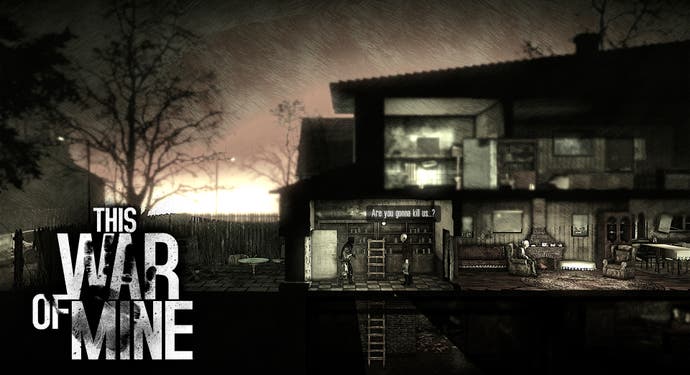
What makes This War of Mine truly special, in my opinion, is that it's not just a "serious game" that aims for artistic and emotional targets, thus giving me the chance to pontificate about more than just cutscenes and bonus levels. It is, rather contradictorily, a really enjoyable game as well.
The night time foraging missions are superbly done. Through a simple point and click interface, they create little miniature thrillers every time - heart-in-mouth vignettes of stealth and daring that are more exciting, to me, than pretty much any other game this year. Only Alien Isolation came close, and both games share a knack for making stealth feel truly terrifying.
Creeping around a warehouse, hunting for useful swag, knowing that it's used as a hideout by bandits. Seeing the circular pulse of footsteps on the floor above. Freezing in place as they pause at the top of the stairs. Knowing that if they decide to come down, they'll see me and kill me. Cursing myself for not closing doors behind me, tipping them off to the presence of an interloper.
All other points aside, and for all its gloomy overtones, I really enjoy heading out into this world and poking around in its ruins. Even when those sorties find me terrifying an old woman who begs me not to kill her. Even when I return to her house weeks later and find her corpse. I didn't take all of her medicine - a small mercy that I thought would partially redeem my desperate theft. When I return after that discovery, all the survivors can think about is whether she killed herself because of us.
It's in that interplay between a gameplay mechanic that is intuitive and fun, and a context that is murky and troubling, where This War of Mine really won me over. It makes me feel bad, and that makes me feel good. I don't even want to know how that little psychological loop works. Suffice to say, it's given me emotional reactions that rival those of any film, book or TV show from this year - not because it tries to be like those things, but because it embraces its strengths as a video game.



